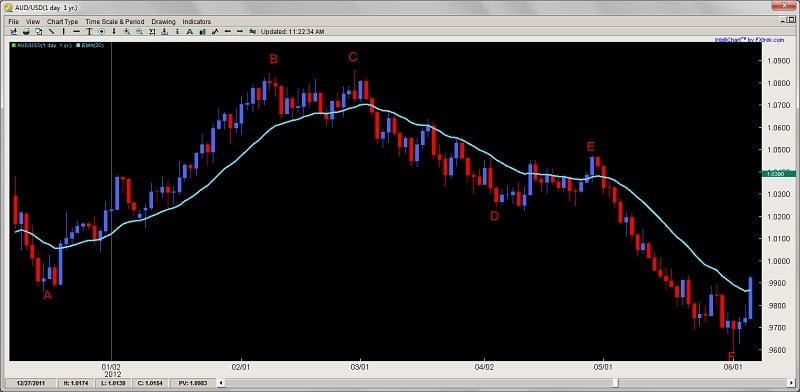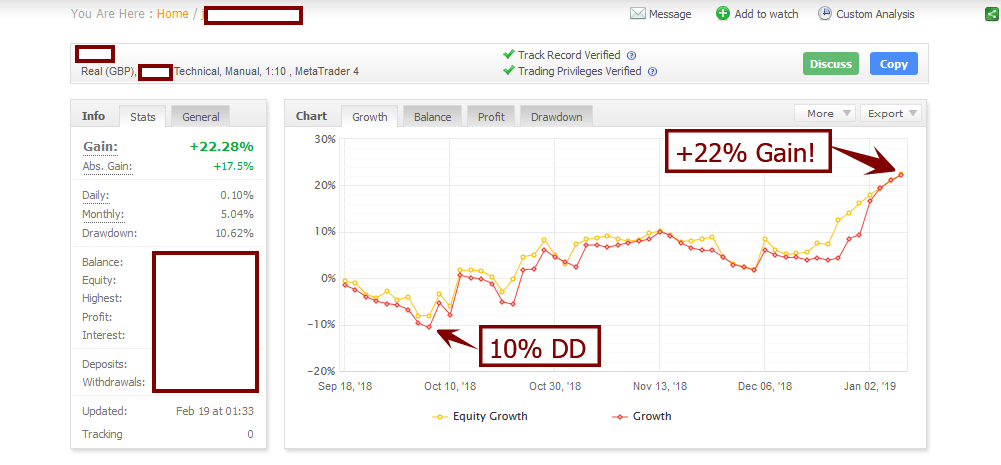For all those traders interested or currently trading Ichimoku, you will not want to miss this article.
Although I am heading out in a few hours with my girlfriend to Harbin Hot Springs, I wanted to write a brief introduction to Ichimoku Number Theory as there has been a lot of questions (and confusion) about Ichimoku settings, time frames, etc.
The basis of Ichimoku as known to most is the 5 lines;
- Tenkan Line
- Kijun Line
- Senkou Span A (part of the Kumo)
- Senkou Span B (other part of the Kumo)
- Chikou Line
Almost 95% of the commentary, traders, educators and understanding of the ichimoku kinko hyo view this as the basis of Ichimoku.
This is actually incorrect.
The basis of Ichimoku are the three pillars which are listed below;
- Ichimoku Number Theory (also has to do with time)
- Ichimoku Wave Theory
- Ichimoku Price Theory
These are the three pillars of Ichimoku, but the root of all them is based on the Ichimokunumber theory.
4.5yrs
Goichi Hosada (founder of Ichimoku) in his development of Ichimoku, spent 4.5yrs of his study just on number theory. He studied pretty much every Eastern and Western theory under the sun, and eventually settled upon 3 basis numbers that he not only made the basis of Ichimoku theory, but underlined all of reality.
NOTE: I have an interesting follow up story to tell about this so remind me to discuss it later.
The three numbers he made as the basis for Ichimoku were 9, 17 and 26.
So the idea that the reason why the Kijun was set to 26 periods had to do with the former 6 day Japanese trading week is false.
The kijun was set to this measurement, along with the tenkan – based on his findings.
What this means is, for those who are asking the question about should we adjust the settings since we are not working with a full trading week, or are trading an intraday time frame, is in effect answered. Regardless of the trading week or time frame, we are best served from an Ichimoku perspective keeping the original settings. So hopefully this puts that one to rest and the kabbash on all the alternative theories.
The 10 Numbers
Although there were 3 basic numbers which underlie the entire set of Ichimoku numbers, there were 10 in all. They are listed below;
9
17
26
*These three represent the basic or simple numbers
33
42
65
76
129
172
200-257
Now if you do a quick calculation, 9+17 = 26. 26+17 = 42+1. 33+9 = 42. 33×2 = 65+1. 42+33 = 76-1. 65×2 = 129+1. 129+42 = 172-1. So all these numbers are interrelated and all comprised of the basic numbers in some way.
There are names for these numbers like one section, two sections, one period, etc. which I will get into a later date, but the basic three names are;
one section (9)
two sections (17)
1 period (26)
So if you see me using this terminology in my future Ichimoku posts, you will know what I am talking about.
Use in Practice
Ideally, Ichimoku number/time theory should be used in combination with the price and wave theories. So by itself, it is limited. But we can start the introduction with the basic concept. This is, the market is more likely to have a turning point or strong price action reaction around these numbers. They are not meant to be treated as fixed in stone numbers, but moreso higher probability turning or reaction points. An example of this is below;
AUDUSD Daily Chart
Now using the chart above, lets make some observations:
A-B = 41 (1 short of 42 bar move)
B-C = 16 (1 short of two section move/17)
C-D = 26 bars exactly or one period
D-E = 18 bars (1 short of two sections move)
E-F = 26 bars exactly or one period
Now this is just one chart and there will be many that are not so accurate upon first glance, and others that are. JPY pairs tend to move and respond more to the Ichimoku paramters and numbers since a great amount of Japanese traders are primarily trading Ichimoku strategies, and therefore are making trades based on it.
However, from my experience, this works on most pairs, commodities, and indices across the board, so quite potent and relevant. Keep in mind, it is important to understand we do not just apply the Ichimoku number/time theory in isolation, but mate it with Ichimoku price and wave theory. When combined, they become very highly predictive tools for catching major turning points, finding precise targets and determining future support and resistance levels, so powerful tools when yielded properly.
In Summary
Although this is just an introduction, I hope this gives you a better understanding of Ichimoku and how not to relate to it in just its basic form, but understand there is more going on than just the 5 lines. Anyone just teaching and professing the 5 lines as the be all end all of Ichimoku have very little understanding of it.
Goichi Hosada once said about this in the mid 80’s;
“Of the 10,000 or so people who are practicing and trading Ichimoku, only about 10 really understand it.”
Keep in mind, when he was saying it, he was including himself and his grandson, so not many. This is because people get too fascinated with the 5 lines and relate to that only without ever taking the time to understand what it is all about. Although the 5 lines are potent and informative by themselves, they are a small fraction of the Ichimoku picture and information contained in the Ichimokukinko hyo chart, so keep this in perspective.
I’ll be doing further introductory articles about these additional elements in the future over the next several months, but hopefully this sparks your curiosity and imagination for now.
For those wanting to learn how to trade the Ichimoku Cloud, Ichimoku time, Ichimoku price and Ichimoku wave theory, along with lifetime access to the Ichimoku traders forum, using rule-based systems, make sure to check out my Advanced Ichimoku Course.




Hi chris
NOTE: I have an interesting follow up story to tell about this so remind me to discuss it later.
Chris, this is your reminder 😉
Happy Holidays!
Aloha,
James
Please email me – i’m interested.
i love it
Thanks Ray.
Glad you liked it.
Kind Regards,
Chris
Chris, thanks for keeping us informed.
This is interesting and would like to learn more about the number and number theory especially how to choose the spots for the letters as in the graph above and combining it with the lines.
Looking forward to the additional articles!
Thanks.
Chris, I want to add if forex was an Olympic sport you would be a Gold medal winner. Maybe one day your archery skills will take you to the Olympics!
Nazaar
safe trip Chris
hope you are enjoying your vacations.
much blessings to you and yours
Seeing as no one mentioned this so far, here’s me reminding you to discuss the follow up story you mentioned in the post. 😀
Ha, very good.
Im at the airport, but will do so tomorrow after i land in holland and get settled.
Glad you asked.
Kind Regards,
Chris
I think i’ll just stick to my price action studies for now. Chris, i just learnt your book is out and i am gonna order for a copy.
Does it contain enough education to make me a profitable price action trader or is it just an introduction to price action. Thanks.
Ray ( Nigeria ).
Hello Ray,
Actually, my book is not out yet – will be hopefully in Jan. 2013.
In regards to the book making you a profitable price action trader and the content – there is some significant content in there, but ask yourself one question;
Has anyone ever become professional from just reading one book, or even dozens of books?
No, you have to work with a mentor and trainer. Books alone cannot take you there. But, they can be a significant step along the way.
Kind Regards,
Chris
Hi Chris,
Thanks a lot for the article.I was wondering from so many days what would be this “one section or two section move” which you were using in articles.Now its crystal clear what are those.
Just a minute confusion about marking those Moves (A,B,C,D,E,F) on chart.Especially about move D.Waiting for your reply!!!
Hope You enjoyed your outing at Harbin Hot Springs.Didn’t you ??? 😀
Kind Regards
Amis
Hello Amis,
Sorry for delay as I’ve been mostly on vacation but glad you liked it.
Ill be doing more of this in my Ichimoku Course so hopefully you can join soon.
All the best.
Chris